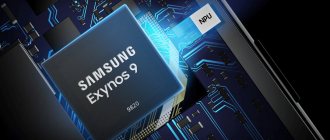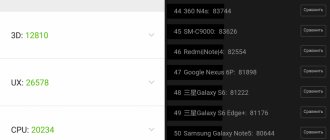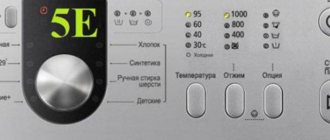We have been told for a long time that the Galaxy S8 will be the first smartphone on the Snapdragon 835. And you can’t say that they lied, but the main chipset of the new flagship will not be Snapdragon, but the Exynos 8895 - Samsung’s own development. It is the Exynos 8895 that will overclock the Galaxy S8 for the European market. The S8 with Snapdragon 835 will be sold mainly overseas.
Updated 03/30/2017. Five-Inches has published a review of the key characteristics of the Galaxy S8. Link to article Galaxy S8: launch of the eighth Intergalactic! The website also published a report on the presentation, in which we talk about the main features of the smartphone: Samsung Galaxy S8: new functions - useful and not so useful.
All characteristics of Galaxy S8 and Galaxy S8+
Key Features of Exynos 8895
The characteristics of the Samsung Exynos 8895 are noticeably different from the Snapdragon, but we’ll start with what they have in common - both chips are manufactured using the 10nm FinFET process. This alone guarantees that, compared to its predecessors, the performance of processors will increase and energy consumption will decrease.
The official information about Exynos 8895 states that compared to its predecessor (Exynos 8890), the chip's performance will increase by 27% and power consumption will be reduced by 40%.
Snapdragon 835 is also faster than its predecessor (Snapdragon 821), but by 20%. The reduction in energy consumption is slightly less than in Exynos - 25%. We get that regardless of the chipset, the Galaxy S8 will work faster. The battery will last longer and heat up less in heavy applications compared to the Galaxy S7.
Exynos 8895 architecture
At first glance, the architecture of the Exynos 9-series cores is radically different from the architecture of the Snapdragon 835, and the processors are similar only in the number of cores - there are 8 of them. In fact, everything is a little more complicated, and the differences between the processors are not so great.
Exynos 8895: 4 Exynos M2 cores + 4 Cortex A53 cores.
4 Exynos M2 cores are ARM Cortex A73 cores customized by Samsung. The cores are designed to solve complex problems that require peak processing power of the processor. They are overclocked to 2.5 GHz, but the Galaxy S8 will use two versions of Exynos M2: overclocked to 2.3 GHz or to 2.5 GHz. It is the Exynos M2 cores that will determine the speed of the S8 in games and demanding applications.
4 Cortex A53 cores are reference cores with low power consumption for solving simple tasks during normal smartphone use. They appeared in processors several years ago, but are still relevant for everyday tasks. Cortex A53 operates at 1.7 GHz.
Comparison of Exynos 8895 and Snapdragon 835
The Snapdragon 835 has all 8 cores - Qualcomm Kryo 280 CPU, but they are also divided into two clusters. The cores of the first cluster are built on the ARM Cortex A73 architecture customized by Qualcomm. The second cluster is represented by cores created based on the Cortex A53 reference architecture. As you can see, there is more in common between the E8895 and SD835 than it might seem at first glance.
The Snapdragon 835 also has the familiar division into powerful cores and low-power cores. The former support clock speeds up to 2.45 GHz. The cores, designed to reduce battery consumption, are limited to 1.9 GHz.
UPD. New publications on Five-Inches: 1. Exynos 8895 results in GeekBench. 2. Results of Snapdragon 835 tests conducted by Qualcomm. 3. Comparison of Snapdragon 835 and Snapdragon 821. 4. Galaxy S8 in AnTuTu and GeekBench.
Graphics adapter
Exynos 8895 is paired with the new Mali-G71 graphics accelerator. The new adapter is 60% faster than its predecessor (Mali-T880 MP12, which is found in the Galaxy S7). Moreover, the Mali-G71 is also 20% more economical, which will have a positive impact on the battery life rating of the Galaxy S8.
According to Samsung, a powerful graphics system will allow you to enjoy all the delights of VR and AR in 4K resolution. There is also good news for home video lovers: in Ultra HD resolution you can record and watch videos at a frequency of 120 frames per second.
Comparison of Exynos 8895 and Snapdragon 835
an Adreno 540 graphics accelerator . The new graphics are 25% faster than its predecessor - Adreno 530. With 4K video encoding, not everything is so smooth - on the Qualcomm website on the official page of the processor it is said that it supports video recording in 4K/30 fps format, and playback - 4K/60 fps. There is no mention of the ability to record and watch video at 120 frames per second.
Samsung Exynos 8895's breakthrough in 4K video encoding @ 120 fps is due to the improved Vision Processing Unit (VPU) . The VPU is used for video recording - it performs some of the heavy calculations and offloads the main processor.
Two versions of Exynos 8895: Exynos 8895V and Exynos 8895M
Let's return to the Exynos 8895. The processor will be available in two configurations - Exynos 8895M and Exynos 8895V. The differences are minimal; they only concern the clock speed of the fast cores of the Exynos M2 and the number of graphics adapter cores:
- Exynos 8895M. Clock frequency 4x 2.5 GHz + 4x 1.7 GHz. Graphics adapter Mali-G71 MP20 (20 GPU cores).
- Exynos 8895V. Clock frequency 4x 2.3 GHz + 4x 1.7 GHz. Graphics adapter Mali-G71 MP18 (18 GPU cores).
What modification will the Galaxy S8 receive? Will the Exynos 8895 configuration be different in the Galaxy S8 and Galaxy S8 Plus? Not yet known. In principle, it is difficult to imagine a situation in which the power of the “younger” version of Exynos 8895V is not enough.
Exynos 8895: camera support
Exynos 8895 can work with a camera resolution of up to 28 MP or a dual module of up to 28 MP + 16 MP. All conceivable and inconceivable technical bells and whistles of the camera are, of course, also supported. As for recording video in 4K format, we have already said this - the Ultra HD x 120 frames per second format has been officially announced.
Comparison of Exynos 8895 and Snapdragon 835
Snapdragon 835 supports a camera up to 32 megapixels or a dual module with a resolution of up to 16 megapixels. Video recording in 4K format is possible, but at a frequency of 30 fps.
Wireless technologies
One of the advantages of Exynos 8895 and Snapdragon 835 over competitors is the LTE Cat.16/Cat.13 modem. If you don't know much about modem categories... LTE X16 is the latest generation modem: Cat.16 means a peak download speed of 1 gigabit per second. Cat.13 - distribution up to 150 Mbps.
RAM and interfaces
In this part, the characteristics of Samsung Exynos 8895 and Snapdragon 835 are identical. Both chips support the new UFS 2.1 interface - it speeds up reading/writing from internal memory and running applications. Other interfaces are eMMC 5.1 and SD 3.0.
LPDDR4x RAM clocked at 1866 MHz also provides performance gains while reducing power consumption.
Results
Exynos 8895 processor. Characteristics. Comparison of Exynos 8895 and Snapdragon 835
| Exynos 8895 | Snapdragon 835 | |
| Technical process | 10 nm FinFET | 10 nm FinFET |
| Number of Cores | 8 | 8 |
| Core type | 4x Exynos M2 + 4x Cortex-A53 | 8x Qualcomm Kryo 280 CPU |
| Frequency | 4x 2.5 GHz + 4x 1.7 GHz | 4x 2.45 GHz + 4x 1.9 GHz |
| Graphics accelerator | Mali-G71 MP20 | Adreno 540 |
| Supported memory | LPDDR4x | LPDDR4x 2x 32-bit 1866 MHz |
| Modem | LTE X16. Download speed up to 1 Gbit/sec Upload speed 150 Mbit/sec | LTE X16. Download speed up to 1 Gbit/sec Upload speed 150 Mbit/sec |
| Memory interface | UFS 2.1, eMMC 5.1, SD 3.0 | UFS 2.1, eMMC 5.1, SD 3.0 |
| Camera support | up to 28 MP or dual module up to 28 MP + 16 MP | up to 32 MP or dual module up to 16 MP + 16 MP |
| Video recording | 4K UHD@120fps | 4K UHD@30fps |
| Playing video | 4K UHD@120fps | 4K UHD@60fps |
We have two powerful processors. There is a lot in common between them, but there are also plenty of differences. In any case, the Galaxy S8 will receive a top-end chipset and will take first place in all benchmarks. Last year, Exynos 8890 was noticeably faster than Snapdragon 820. We’ll soon find out what it will be like this time!
Updated 03/30/2017. Five-Inches has published a review of the key characteristics of the Galaxy S8. Link to article Galaxy S8: launch of the eighth Intergalactic!
Samsung introduced the Exynos 9 8895 mobile chip - 8 cores, 10 nm, gigabit LTE
While desktop processor manufacturers are unable to master the 10 nm process technology, while continuing to produce the most powerful processors using the 14 nm process technology, other electronics manufacturers have already overcome this technological milestone.
On February 23, 2020, Samsung introduced the latest generation of high-performance systems-on-chip (SoC) - Exynos 8895, the first SoC designed by Samsung using a 10 nm design process (FinFET). This SoC determines the technical characteristics of the most powerful smartphones of the near future, perhaps the next Galaxy S8 (April). The A11 chip in the iPhone 8 (September), which is also produced using a 10nm process technology by TSMC, will have similar characteristics. Samsung has been producing the Exynos mobile SoC line for a long time, but recently it has clearly staked out a leadership position in the high-end sector, as confirmed by the latest models of Exynos 7420 and Exynos 8890 chips, made using the 14-nm process technology. By the way, Exynos 8890 became the first SoC that is based on Samsung’s own Exynos M1 microarchitecture. Compared to standard ARM architectures, a number of changes and improvements have been made to it.
Exynos 8895 continues this tradition, it is also based on its own microarchitecture and M1 cores.
From the name Exynos 8895 it is clear that it should not differ much from the Exynos 8890, but still there are a number of pleasant changes. The most important thing, of course, is the transition to the 10 nm process technology. And in the technical specifications, the radical improvement in the image processor (ISP) is striking. Signal processing from the front camera has been increased from 13 MP to 28 MP. The main camera has grown from 24 MP to 28 MP, and a “dual camera” mode has appeared. The characteristics of the modem have been improved, which now supports data reception at speeds up to 1 Gbit/s
(LTE Cat16) - just like the future Qualcomm X20 LTE modem.
Graphics have been seriously improved to Mali G71MP20. This GPU can render virtual reality at 4K resolution and supports Vulkan API, OpenGL ES and OpenCL. New smartphones will be able to work on displays with a resolution of 3840×2400 and 4096×2160.
The clock speeds of the central and graphics processor are not yet known.
Exynos SoC Specifications
| SoC | Exynos 8895 | Exynos 8890 | Exynos 7420 |
| CPU | 4x A53 4x Exynos M2(?) | 4x [email protected] .6 GHz 4x Exynos M1 @ 2.3 GHz | 4x [email protected] .5 GHz 4x [email protected] .1 GHz |
| GPU | Mali G71MP20 | Mali T880MP12 @ 650 MHz | Mali T760MP8 @ 770 MHz |
| Memory controller | 2x 32-bit(?) LPDDR4x | 2x 32-bit LPDDR4 @ 1794 MHz 28.7 GB/s b/w | 2x 32-bit LPDDR4 @ 1555 MHz 24.8 GB/s b/w |
| Storage | eMMC 5.1, UFS 2.1 | eMMC 5.1, UFS 2.0 | eMMC 5.1, UFS 2.0 |
| Modem | Receive: LTE Cat16 Transmit: LTE Cat13 | Receive: LTE Cat12 Transmit: LTE Cat13 | Unknown |
| ISP | Rear: 28 MP Front: 28 MP | Rear: 24 MP Front: 13 MP | Rear: 16 MP Front: 5 MP |
| Technical process | Samsung 10 nm LPE | Samsung 14 nm LPP | Samsung 14 nm LPE |
Thanks to the transition to the 10 nm LPE process technology, it was possible to achieve a performance increase of 27% and reduce power consumption by 40% relative to 14 nm. However, the company does not explicitly indicate that improvements in these two parameters were achieved simultaneously
.
or
seems more realistic .
The octa-core Exynos 8895 contains four high (M2?) and four power-efficient cores. It is currently unknown what specific changes have been made to the “second generation” core compared to the M1.
Since the energy-efficient Cortex-A53 cores are also produced using a 10 nm process technology, while maintaining the same architecture, they should become very tiny in size - after all, even at 14 nm they were less than 1 mm².
Exynos 8895 will be the first SoC from Samsung to support heterogeneous system architecture (HSA). This means that the CPU and GPU modules operate on the same bus with shared memory, which improves SoC performance and facilitates programming. There is no longer a need to move data from CPU memory to GPU memory and back.
Samsung has incorporated more energy-efficient LPDDR4x memory into the chip, which is an extension of the LPDDR4 standard. Its power consumption is reduced by 20% by reducing the I/O VDDQ output voltage by 45%, that is, from 1.1 V to 0.6 V. LPDDR4x memory has just begun to be produced, and it is also supported by the recently announced Qualcomm Snapdragon 835.
Among other improvements, Samsung mentions a new Multi-Format Codec (MFC) video decoder, which supports the latest HEVC and VP9 video formats with a decoding speed of 120 fps at a maximum resolution of 4K UHD.
After all, Samsung has integrated a “security subsystem with a separate compute module” into the Exynos 8895 for authentication (iris recognition, fingerprint recognition), mobile payments and the like. According to the description, it sounds like an Apple Secure Enclave.
Samsung has announced that mass production of the Exynos 8895 has already begun, so the release of the Galaxy S8 is clearly just around the corner.
Author: alizar
Source










